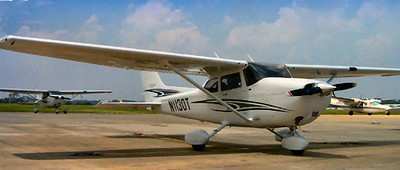Pilot Fatally Injured, Passenger Remains Missing
The NTSB has released a preliminary report from an accident involving a Cessna 172S that went down in the ocean off the coast of Maryland. The airplane was destroyed when it impacted the water, resulting in the fatal injury of the pilot. The passenger that was aboard the aircraft is still missing, and presumed to be dead as well.

According to the report, on February 28, 2018, about 1930 eastern standard time, the aircraft went down in the Atlantic Ocean about a mile east of Ocean City Municipal Airport (KOXB), Ocean City, MD. The private pilot was fatally injured. The passenger has not been located and was presumed fatally injured. The airplane was registered to Middle River Aviation. The flight departed Martin State Airport (KMTN), Baltimore, Maryland, about 1755.
According to flight school personnel at MTN, the pilot rented the airplane on the day of the accident for a short cross-country flight to KOXB. Preliminary information from air traffic control revealed that the pilot flew direct and obtained flight following en route to KOXB. He cancelled flight following during the approach to OXB and there were no further radio communications from the pilot. A review of preliminary radar data showed the airplane descended from 2,000 ft to 700 ft above ground level before radar coverage was lost. Witnesses at KOXB reported seeing the airplane conduct a touch-and-go landing before departing the traffic pattern. According to the flight school, the airplane was not rented for an overnight trip and the pilot was expected to return to MTN.
The following morning, when the flight school office manager arrived at work, she noticed that the airplane had not returned, and reported it missing to her manager. She contacted KOXB and was informed that the airplane was not at the airport. The office manager called surrounding airports and the Coast Guard to attempt to locate the missing airplane. After the airplane was not accounted for at any of the airports, the flight school initiated a search flight along the pilot's last known flight route. About 1030, they reported seeing an oil slick 2 miles off the end of runway 14, at KOXB. The GPS coordinates were shared with the Civil Air Patrol and the Coast Guard.
According to the Maryland Natural Resources Police, they received a call of a missing airplane that was conducting touch-and-go landings at OXB. A search of the shoreline ensued, and debris was sighted. During the search, a fuel oil slick was discovered that was still bubbling to the surface. They positioned their vessel around the highest concentration of fuel and oil and anchored. Divers subsequently discovered a wing and the fuselage of the airplane. Shortly after, the pilot was found within the wreckage.
The wreckage was located in the Atlantic Ocean about 1 mile from the shoreline, at depth of 50 ft.
The pilot held a private pilot certificate with an airplane single-engine land rating, and a Federal Aviation Administration first-class airman medical certificate issued August 24, 2017, with no limitations. According to flight school records, the pilot had accumulated about 81 hours of total flight experience.
(Image from file. Not accident airplane)
 ANN's Daily Aero-Term (05.02.24): Touchdown Zone Lighting
ANN's Daily Aero-Term (05.02.24): Touchdown Zone Lighting Aero-News: Quote of the Day (05.02.24)
Aero-News: Quote of the Day (05.02.24) Aero-News: Quote of the Day (05.03.24)
Aero-News: Quote of the Day (05.03.24) ANN's Daily Aero-Term (05.03.24): UAS Traffic Management (UTM)
ANN's Daily Aero-Term (05.03.24): UAS Traffic Management (UTM) ANN's Daily Aero-Linx (05.03.24)
ANN's Daily Aero-Linx (05.03.24)



